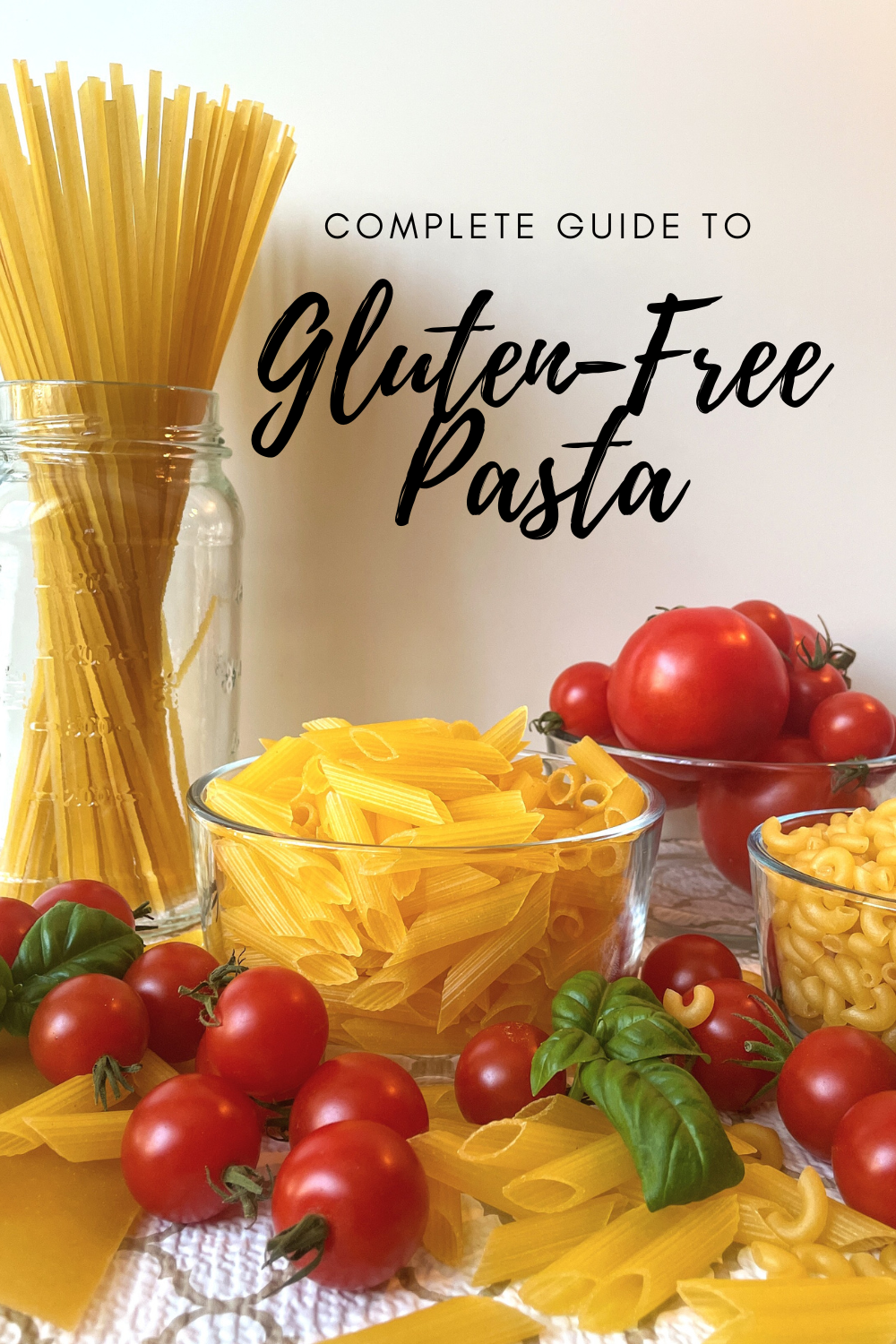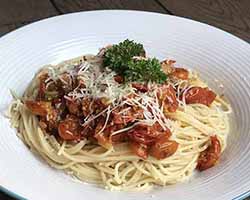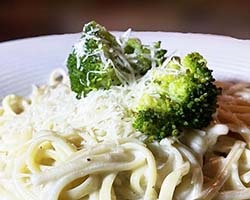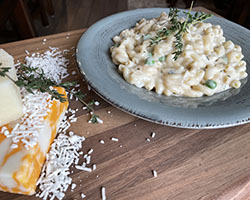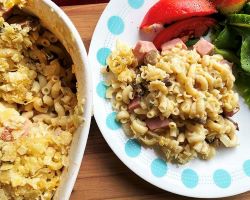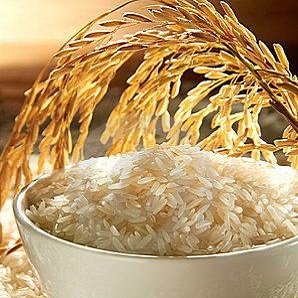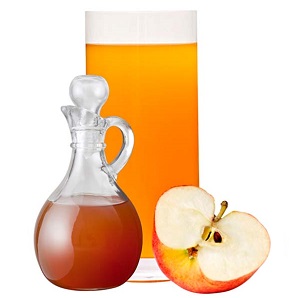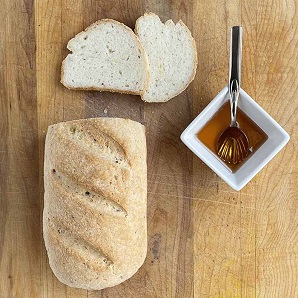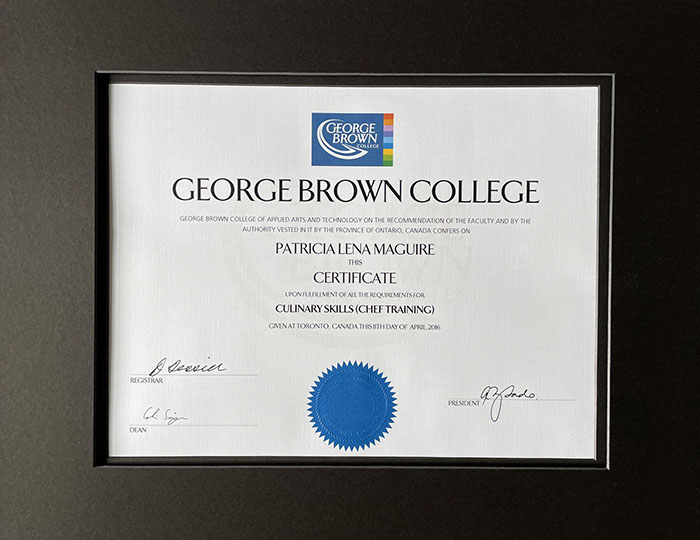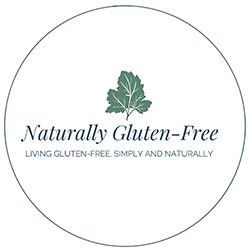- Home
- Gluten Free Food
- Gluten-Free Pasta
Complete Gluten-Free Pasta Guide: Best Brands, Cooking Tips & Recipes
“You don’t miss the water ‘til the well runs dry.” This slice of wisdom from my grandmother reminds me of the day I was diagnosed with celiac disease and thought I was kissing pasta goodbye forever. Then I learned about gluten-free pasta.
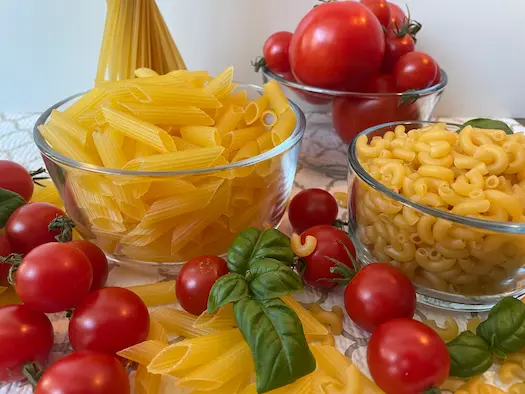
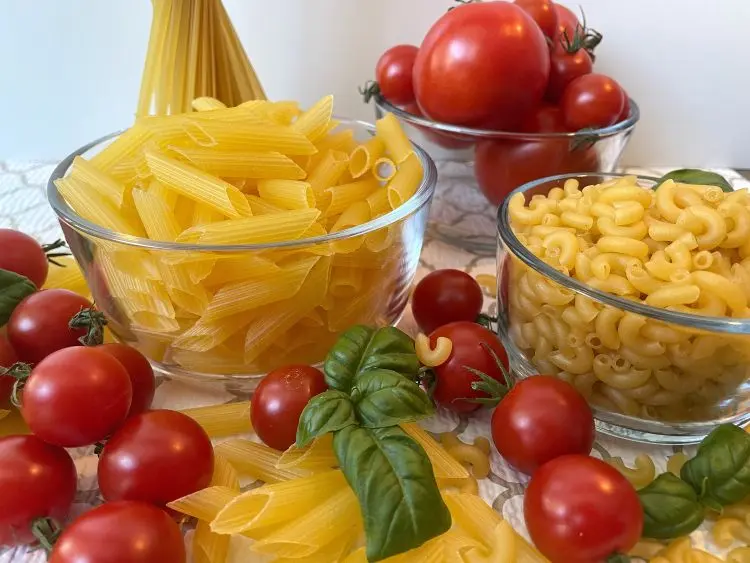
Some people say they could never give up bread, buy my biggest worry was spaghetti. I thought I’d never enjoy a bowl of twirly, slurpy sauciness again.
Thankfully, I soon discovered that gluten-free pasta doesn’t just exist, it’s delicious, versatile, and comes in more varieties than I ever imagined.
I’m guessing you have questions about gluten-free pasta, so I've created this guide to give you clear answers. You'll soon be choosing, cooking, and loving your favorite gluten-free pasta dishes with confidence
Table of Contents
Is Pasta Gluten-Free?
No, traditional pasta is not gluten-free. Most pasta is made from wheat flour, which contains gluten. For people with celiac disease or gluten intolerance, wheat pasta is off limits.
The good news is that gluten-free pasta is widely available, and it’s come a long way from the mushy, flavorless versions of a decade ago, when I first started this journey. Today, you can find dozens of high-quality brands that taste remarkably close to wheat pasta and come in all the familiar shapes.
What Is Gluten-Free Pasta Made Of?
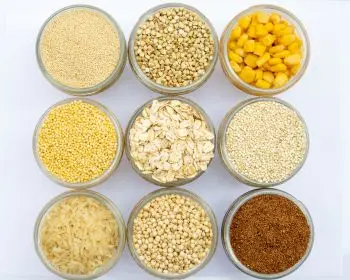
Gluten-free pasta is made from gluten free grains and seeds like rice, corn, quinoa, buckwheat, and chickpeas. Some brands use one ingredient, while others blend several for better taste, texture and durability. To help the pasta hold together, binders like xanthan gum or tapioca starch are sometimes added.
Different bases create different flavors and nutritional benefits:
- Rice-based pasta – mild flavor, good carrier for sauces.
- Corn pasta – slightly sweet and golden, excellent for pasta salad.
- Quinoa or chickpea pasta – higher in protein and fiber.
- Buckwheat (soba) – earthy and nutrient-rich, common in Japanese dishes.
- Multi-grain pastas – combinations of grains like white and brown rice, corn and quinoa. Closest to wheat pasta.
Some companies are experimenting with ancient grains like amaranth, millet, and teff, or even black beans. All add unique flavors, colors and nutrients.
Are you still feeling limited? If you’re like me, you may be discovering a whole new world of pasta that you didn't know existed.
Important Tip:
Be sure to choose pasta with a "Gluten-Free" label. Don't assume pasta made from alternative grains is safe.
Is Gluten-Free Pasta Healthy?
Yes, if you have celiac disease or gluten sensitivity, it’s the only healthy choice. Beyond that, it depends on the type you buy.
- Chickpea and lentil pasta can contain up to 20g of protein per serving and are rich in fiber.
- Buckwheat soba noodles provide important minerals and complex carbs.
- Rice and corn pasta are lighter, easy to digest, and often enriched to match the nutrients in wheat pasta.
Overall, gluten-free pasta has a similar nutrition profile to wheat pasta, though some varieties offer extra health benefits. The best choice comes down to your taste and texture preference as well as your special dietary needs.
Some people without gluten issues wonder if they should switch to gluten-free pasta for health or weight-loss. My suggestion is to try a few for variety, but nutritionally there’s not much difference.
Pin for Later
Best Gluten-Free Pasta Brands
I’ve tried them all, or most of them anyway. Specialty applications aside, if you’re just looking to replace your wheat pasta, look for a quality brand. A few stand out because they're widely available and deliver good texture and flavor:
- Barilla – Popular and easy to find in the US and Canada. Made from corn flour and rice flour, texture is very close to wheat pasta.
- Catelli (Canada) – Made from a blend of rice, corn, and quinoa. This Canadian brand is made by the same company as Barilla. It is also close to wheat pasta and holds up well in cooking.
- Jovial – An Italian brand made with organic brown rice, known for authentic taste.
- President’s Choice (Canada) – Available at Loblaws and affiliated stores, PC gluten-free pasta is made from a corn and rice blend. It’s affordable, easy to find across Canada, and performs well in classic pasta dishes.
Each of these brands is widely available in grocery stores and online.
Shapes of Gluten-Free Pasta
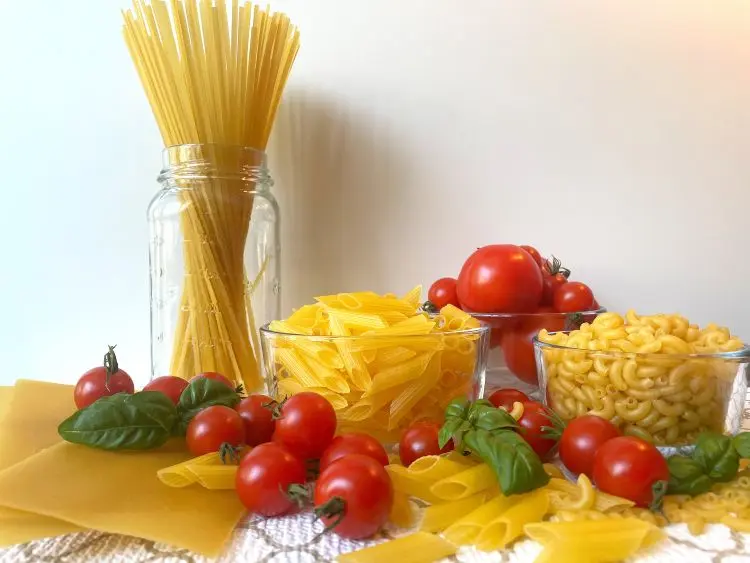
Just like wheat pasta, gluten-free pasta comes in all the familiar shapes: spaghetti, linguine, penne, fusilli, macaroni, and even oven-ready lasagna noodles. Which shape you choose will make a difference in how easy it is to cook and how well it holds up in your favorite recipes.
Here are a few tips from my experience:
- Spaghetti – This is the trickiest to cook. It breaks apart easily if overcooked or stirred too much. Personally, I’ve switched to linguine. The thicker noodles are a little sturdier and hold together better.
- Penne and rotini – These short shapes are a little more forgiving, and excellent at catching sauce.
- Macaroni – Classic for mac & cheese or pasta salad. Be careful not to over cook.
- Lasagna noodles – Available in both boil-and-serve and oven-ready sheets. The oven ready version is simpler and easier to work with - meaning less likely to fall apart.
Product Recommendations: Shop the Guide
I’ve put together a list of products I keep in my pantry along with convenient links. If you choose to purchase through one of these links I may earn a small commission at no extra cost to you.
Gluten-Free Pasta Brands
Reliable brands like Barilla, Catelli, and Jovial, gluten-free pasta are all available online.
Cooking Tools
I love my collapsible colander. It fits right over the sink for easy hands-free straining.
Gluten-free pasta benefits from careful cooking. This large pasta pot has a strainer lid and cool grip handles. Gentle tools like silicone spoons and pasta servers help keep noodles from breaking.
If you’d like to try veggie-based alternatives, a spiralizer or mandoline slicer makes quick work of zucchini or eggplant.
Sauces & Pantry Staples
Pair your pasta with gluten-free sauces like Rao’s marinara or Classico. Remember to always check ingredients as formulations change.
Storage & Meal Prep
Cook once, enjoy twice! Glass storage containers go from fridge to microwave to table making leftovers easy to store and reheat without losing texture.
Cookbooks & Inspiration
Want more ideas? Check out my review of America's Test Kitchen Mediterranean Cookbook. If you like the sound of it, its a great way to expand your recipe collection and find new favorites.
How to Cook Gluten-Free Pasta (Quick Tips)
Gluten-free pasta can be a little delicate, but follow these tips and your pasta will cook up beautifully.
- Use plenty of water – gluten-free pasta releases more starch.
- Stir gently and sparingly – at the beginning then once or twice to prevent clumping. Over stirring causes breakage and release of starch.
- Simmer don’t boil hard – reduces breakage.
- Use a timer and test early for doneness – it can go from perfect to mush quickly.
- Serve right away – gluten-free pasta doesn’t hold as well if left sitting.
For reheating tips, storage advice, and more cooking notes, visit my full guide on How to Cook Gluten-Free Pasta.
Gluten-Free Pasta Alternatives
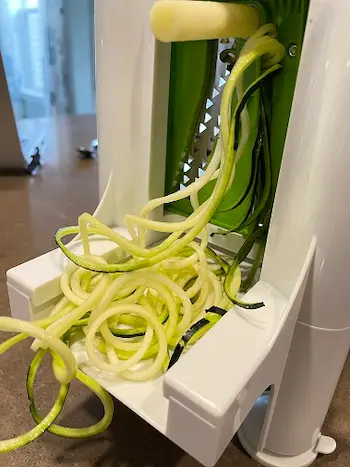
Are you looking for grain-free or lower-carb options? Maybe you’re following a keto diet or just looking for some variety. These vegetables and specialty noodles make excellent pasta substitutes:
- Zoodles (zucchini noodles) – light and fresh. Buy ready made or have fun with the spiralizer.
- Spaghetti squash – naturally stringy, perfect for tomato-based sauces.
- Cauliflower pasta – a natural with cheesy sauces. Great for mac & cheese or casseroles.
- Eggplant or zucchini lasagna slices – hearty and carb-free.
- Shirataki noodles – made from konjac root, very low calorie, low carb and chewy in texture.
- Sweet potato noodles – either spiralized fresh or in Asian-style dried noodles. Lots of fiber with a hint of sweetness.
These alternatives are naturally gluten-free and bring unique flavors and nutrition to your naturally gluten-free meals.
Homemade Gluten-Free Pasta
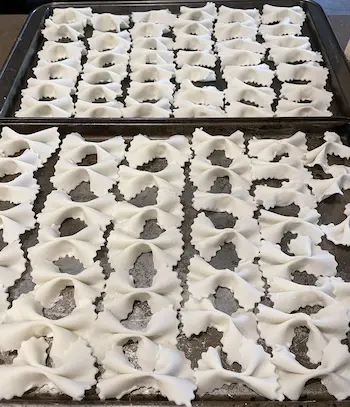
Making your own gluten-free pasta at home is easier than you might think. A basic recipe uses gluten-free flour, eggs, olive oil, and a little xanthan gum. For those avoiding eggs, there are vegan versions made with just flour, hot water, and salt.
Fresh gluten-free pasta cooks very quickly — often in just 2–3 minutes — so watch closely. It has a tender texture and a clean flavor that makes a perfect base for simple sauces.
Cost of Gluten-Free Pasta
I don't want to be a Debbie Downer here but let's face it, Gluten-free pasta is more expensive than regular wheat pasta. This has gotten even worse with recent grocery inflation, turning what used to be a cheap, delicious meal into something a little less budget friendly.
A few years ago I did a price comparison and found a 17% difference. Now, the cost of gluten-free pasta can be as much as 40 to 60% higher than wheat pasta. On top of that, the package sizes are often smaller - you’re paying more and getting less.
Is it worth it? I would say yes, in moderation, and here's why:
If you study the Mediterranean Diet, you'll find pasta recommended as part of a healthy meal, not the whole meal - a serving of pasta is about 2 to 3 ounces. Add lots of veggies and a little protein and you've got a good reasonably priced meal.
This is a good tip for controlling the cost of gluten free food in general. Have a little of the expensive gluten-free specialty product like bread or pasta but focus your meal on naturally gluten-free whole foods.
Frequently Asked Questions about Gluten-Free Pasta
Is pasta gluten-free?
No. Traditional pasta is made from wheat and contains gluten.
What is gluten-free pasta made of?
It’s made from gluten-free grains like rice, corn, quinoa, buckwheat, or legumes such as chickpeas, lentils or black beans.
Is gluten-free pasta healthy?
Yes, especially for people with celiac disease or gluten intolerance. Some types, like chickpea or lentil pasta, are also higher in protein and fiber.
Can you reheat gluten-free pasta?
Yes. Add a little sauce or water when reheating to restore moisture and prevent clumping.
What’s the best way to cook gluten-free pasta?
Use plenty of salted water, stir gently, use a timer and test early to avoid overcooking.
Gluten-Free Pasta Recipes
Gluten-free pasta works beautifully in classic dishes — and with so many shapes available, you can enjoy it in almost any recipe that calls for pasta. These are the ones I serve over and over:
Conclusion
Gluten-free pasta has come a long way. From everyday brands you can find in any grocery store to gourmet options that taste similar to wheat pasta, there’s something for everyone. With the right cooking method and a little experimentation, you can enjoy pasta dishes that are every bit as satisfying as the originals.
